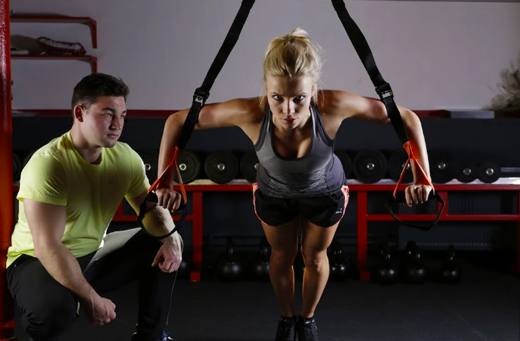Read more
Some suggestions to keep you on track with your fitness goals:
Make sure your goals are attainable by making them SMART (specific, measurable, and time-bound). Keep your mind clear and your spirit up by doing this.
Choose an activity that you will look forward to doing: Pick an activity that you can see yourself doing often and enjoying. Maintaining your motivation and enjoying your workouts will be easier with this strategy.
Keep a log of your exercises, measurements, and how you're feeling to monitor your development. Making headway may be a powerful inspiration.
Support yourself by surrounding yourself with positive influences and finding a workout partner to help keep you accountable and enjoy the process more.
Reward yourself after you've accomplished something significant or when you've met a fitness goal. This will serve as a source of inspiration and drive as you strive toward your goal.
How does one go about initiating a program of physical activity?
Some suggestions for getting into shape:
Create a plan of action that you can actually follow through on. Select objectives that can be evaluated quantitatively and qualitatively and that have a definite end date. Keep your mind clear and your spirit up by doing this.
Identify a form of physical activity that you will enjoy: Locate any form of physical activity that you can look forward to undertaking. Anything from jogging and yoga to lifting weights is acceptable here. Picking an activity you take pleasure in can help you maintain your workout schedule.
Begin with reasonable, shorter workouts and work your way up to longer and harder sessions. Doing so will aid in staying healthy and stave off fatigue.
Build a timetable: Establish a regular time to exercise and do it. With any new workout regimen, consistency is the name of the game.
Prepare for your workout by acquiring the necessary tools and clothing. Doing so will give you a sense of readiness and assurance.
Rest and recuperation are equally as crucial as exercise, so don't neglect them. Rest days should be scheduled, and you should put in the time and effort to get enough sleep and eat well to fuel your exercises.
If you have any preexisting health concerns or injuries, it's important to talk to your doctor or a fitness professional before beginning any new exercise program.
How can I best achieve my fitness objectives, and what kinds of workouts should I perform?
Exercises designed to help you become in shape rely on the specific outcomes you're hoping to achieve. Some instances are as follows:
Body composition and muscular growth are two benefits of strength training activities like weightlifting and resistance band routines.
Cardiovascular activity, such as jogging, cycling, or swimming, can boost cardiovascular health and aid in weight loss.
The term "high-intensity interval training" refers to exercises in which you alternate between brief bursts of intensive exertion and rest. Strength and cardiovascular health are two areas that may benefit from these exercises.
Yoga and other forms of flexibility exercise can help you increase your range of motion, relax your muscles, and prevent injuries.
Balance, coordination, and physical function may all be enhanced via the use of functional training exercises, which are designed to simulate real-life motions.
When deciding on a fitness routine, pick activities that you will stick with since they complement your lifestyle and current fitness level. If you want to avoid getting bored with your workouts and risking overuse problems, you need switch things up often. A trained fitness expert may assist you in creating a routine that is suitable for your needs.
What are the negative effects of a sedentary lifestyle on one's health?
The health concerns associated with a sedentary lifestyle are numerous.
Weight gain and obesity: A sedentary lifestyle can raise the risk of several health issues, including diabetes, heart disease, and some forms of cancer.
Poor physical fitness has been linked to an increased risk of cardiovascular disease risk factors such as high blood pressure and cholesterol.
A significant contributor to developing type 2 diabetes is a sedentary lifestyle. Exercise improves insulin sensitivity and hence can be useful in the treatment and management of diabetes.
If you don't get enough weight-bearing exercise, you run the risk of losing bone density and developing osteoporosis.
The symptoms of sadness and anxiety have been proven to lessen when people engage in regular physical activity. The converse is true if you don't exercise enough.
Loss of mobility and flexibility: Leading a sedentary lifestyle can reduce your range of motion and put you at greater risk of accidents and difficulties with daily tasks.
Shorter life expectancy: less physical activity is linked to a higher risk of death.
Incorporating regular physical exercise into your daily routine can help lower the hazards that come with leading an inactive lifestyle. Incorporating even little amounts of physical exercise throughout your day may greatly improve your health.

















0 Reviews